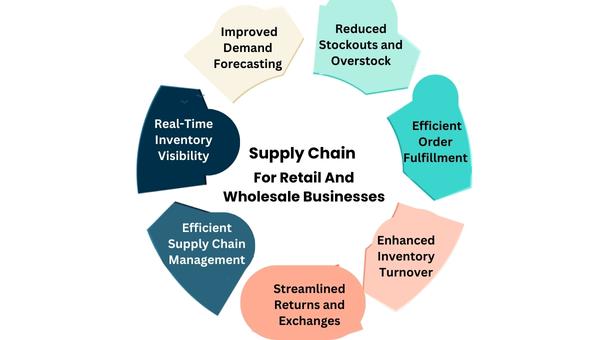
Omni-channel integration has a significant impact on inventory management and Supply Chain Excellence logistics for both retail and wholesale businesses. Here are some key ways it influences these aspects:
1. Real-Time Inventory Visibility
Omni-channel integration provides a real-time view of inventory across all channels. Businesses can track stock levels, sales, and returns in real-time, allowing for more accurate inventory management.
2. Improved Demand Forecasting
With access to data from various channels, businesses can better predict demand and plan their inventory levels more effectively. They can adjust stock quantities based on historical sales data and current trends.
3. Reduced Stockouts and Overstock
Accurate inventory data minimizes the risk of stockouts and overstock situations. Businesses can align their stock levels with customer demand, preventing lost sales and excess holding costs.
4. Efficient Order Fulfillment
Omni-channel integration enables businesses to fulfill orders from the most suitable location, whether it’s a warehouse, a retail store, or a distribution center. This optimization results in faster and cost-effective order processing.
5. Enhanced Inventory Turnover
Businesses can manage their inventory more efficiently and reduce holding costs. This leads to higher inventory turnover, freeing up capital for other investments.
6. Streamlined Returns and Exchanges
Integrated systems make it easier to process returns and exchanges across channels. Businesses can quickly assess the condition of returned items and decide whether to restock or liquidate them.
7. Efficient Supply Chain Management
Omni-channel integration provides supply chain visibility. Businesses can monitor the entire supply chain process from procurement to distribution, optimizing processes and reducing costs.
8. Vendor Collaboration
Wholesale businesses can collaborate more effectively with vendors by sharing inventory and sales data. This ensures that the supply chain is aligned with actual customer demand.
9. Regional and Local Inventory Optimization
Retailers can optimize regional and local inventory levels based on specific market demands. For example, stores in colder regions might stock more winter clothing.
10. Cost Savings
Reduced holding costs, efficient order processing, and optimized supply chain operations lead to cost savings for businesses.
11. Sustainability
Better inventory management and optimized logistics reduce waste and carbon emissions, contributing to a more sustainable supply chain.
Conclusion
omni-channel integration revolutionizes inventory management and supply chain logistics by providing real-time visibility, optimizing inventory levels, improving order fulfillment, and enhancing overall Supply Chain Excellence efficiency. These improvements can result in reduced costs, increased customer satisfaction, and a more competitive position in the market.


